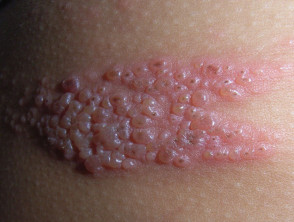Monitoring your asthma with a peak flow meter
Monitoring your asthma on a regular basis is important to keeping your asthma under control. Keeping track of your symptoms whenever you have them is a good idea. This will help you and your doctor adjust your treatment over time.
What is a peak flow meter?
Another way to monitor your asthma is with a peak flow meter. This is a hand–held device that shows how well air moves out of your lungs. Measuring your peak flow can help you tell how well your asthma is controlled. It can also alert you to an oncoming asthma attack hours or even days before you feel symptoms. And during an attack, it can help tell you how bad the attack is and if your medicine is working.
The peak flow meter also can be used to help you and your doctor:
- Learn what makes your asthma worse
- Decide if your treatment plan is working well
- Decide when to add or stop medicine
- Decide when to seek emergency care
Here are instructions for using a peak flow meter to monitor how well your asthma is under control. It is also a good idea to ask your doctor, pharmacist, or other health care professional to show you how to use your peak flow meter. The first step is to find your personal best peak flow number; then you can use the peak flow meter to keep an eye on how well your asthma is under control on a daily basis.
How To Find Your Personal Best Peak Flow Number
Your personal best peak flow number is the highest peak flow number you can achieve over a 2–week period when your asthma is under good control—that is, when you feel good and have no symptoms.To find your personal best peak flow number, follow the detailed steps further down in How to Use a Peak Flow Meter to take your peak flow readings:
- At least twice a day for 2 to 3 weeks
- When you wake up and in late afternoon or early evening
- 15-20 minutes after you take your quick–relief medicine
- Any other time your doctor suggests
- The numbers for each of your peak flow zones. Mark the zones on your peak flow meter with colored tape or a marker.
- The medicines you should take while in each peak flow zone.
- The steps you should take while in each peak flow zone.
Write down the number you get for each peak flow reading. Your doctor will use these numbers to determine your personal best peak flow. Then your doctor will use that number to create three peak flow zones. These zones are usually set up on your asthma action plan like a traffic light—in green, yellow, and red. What your doctor tells you to do in each zone will help you know what to do when your peak flow number changes.
Ask your doctor to write on your asthma action plan:
How To Use Your Peak Flow Meter To Monitor Your Asthma
Every morning when you wake up, before taking your asthma medicine, take your peak flow by following these steps. Make this part of your daily routine. Check this number against the peak flow zones on your written asthma action plan.
Use the zone that your peak flow is in to help make treatment decisions. The zones will help you monitor your asthma and take the right actions to keep it under control or to treat symptoms.
Callout Box:: If you use more than one peak flow meter (perhaps at home and at work or school), make sure they are the same brand.
- Green Zone (Go)—80 to 100 percent of your personal best—signals good control and no asthma symptoms. If you take daily long–term control medicines, keep taking them. And keep taking them even when you are in the yellow or red zones.
- Yellow Zone (Caution)—50 to 79 percent of your personal best—signals caution: Your asthma is getting worse. Add quick–relief medicines, as spelled out in your written asthma action plan. You might also need to increase other asthma medicines; ask your doctor.
- Red Zone (Medical Alert!)—less than 50 percent of your personal best—signals medical alert! Add or increase quick–relief medicines according to instructions in your written asthma action plan and call your doctor now.
Also, use your peak flow meter:
- When you're having asthma symptoms or an attack. First, take your medicine for the attack. Then take your peak flow. This will help you see if the medicine is working for you or if you need more treatment.
- Any other time your doctor suggests.
How to Use a Peak Flow Meter
- Always stand up. Remove any food or gum from your mouth.
- Make sure the marker on the peak flow meter is at the bottom of the scale.
- Breathe in slowly and deeply. Hold that breath.
- Place mouthpiece on your tongue and close lips around it to form a tight seal (do not put tongue in the hole).
- Blow out as hard and fast as possible.
- Write down the number next to the marker. (If you cough or make a mistake, don't write down that number. Do it over again.)
- Repeat steps 3 through 6 two more times.
- Record the highest of these numbers in a notebook, calendar, or asthma diary.






